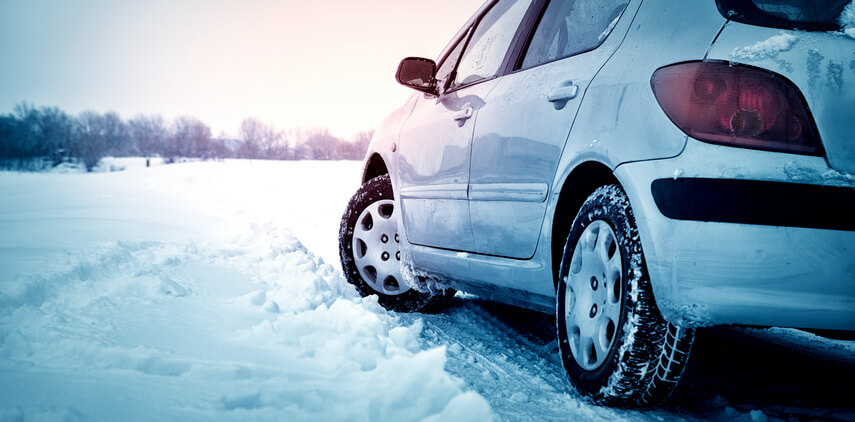Winter weather poses all kinds of challenges to even the most experienced drivers.
Ice and snow can quickly make roads treacherous.
Fortunately, a little preparation and care are all you need to keep safe when driving in winter conditions.
Here are some tried-and-true tips for staying safe on the roads all winter long.
1. Take it Slow
Your car can quickly lose traction when driving on ice. So steer slowly and deliberately and always be aware of other drivers. Allow yourself plenty of extra time in case you need to react to a sudden hazard.
2. Practice Driving in Winter Conditions
Don’t be overconfident about special features like snow tires or anti-lock brakes. Practice driving in an empty parking lot to accustom yourself to the way your car handles in the snow and ice. Try out sudden stops, starts, and turns so you know what to expect.
3. Check Your Battery
The efficiency of your car battery diminishes when the weather gets cold. The battery has to work harder to start your car’s engine in cold weather. Have a mechanic check your car battery’s cables and fluid.
4. Check Your Antifreeze
Antifreeze is the essential ingredient that your car engine needs to protect it from extreme temperatures. Your mechanic can check it for you or you can check it yourself with a few tools from your auto parts store.
5. Pay Attention to Your Tires
Check the tread on your tire by placing a penny in the tread groove with Lincoln’s face towards you. If Lincoln’s entire head is visible, then you know that you need to replace your tires before the snow flies.
6. Pack Emergency Supplies
Ensure that you have supplies with you in your trunk in case of an emergency: a shovel and a bag of salt or cat litter can make all the difference in the world to getting out of a tough winter situation.
7. Give Yourself Extra Time
All kinds of unforeseen delays will happen on the winter roads. Plan extra travel time to account for snowplows, slowed traffic, and/or unplowed roads. Always leave early to ensure that you have enough time to reach your destination safely.
8. Check the Weather Before Driving
This time of year, it’s important to look at the weather forecast every time you drive. If snow or ice accumulation is significant on the roads you plan to travel, consider staying off the roads until they are clear.
9. Leave Extra Distance Between Vehicles
In normal conditions, a car needs about 3 seconds to stop safely. On winter roads, you should plan for at least 10. If you are not leaving this much time, you risk tailgating other drivers, which is against the law in many states.
10. Don’t Use Cruise Control
You never know what the roads might throw at you in the winter. Black ice can quickly cause you to lose control of your car. Cruise control diminishes your control of your vehicle even more, making it unsafe.
Winter is a challenging season for motorists. But with a healthy respect for conditions and some preventative TLC for your vehicle, you can get through this season safely.






















